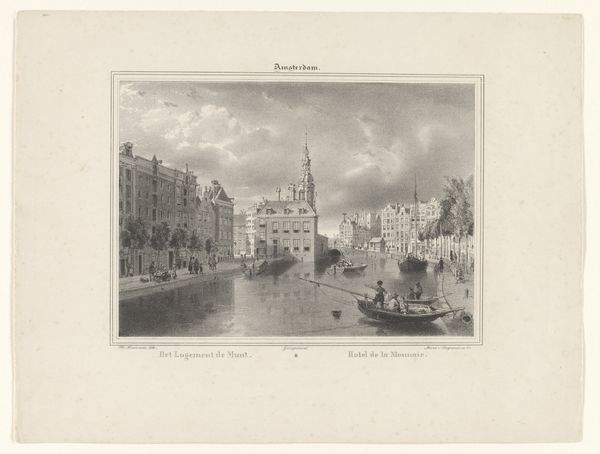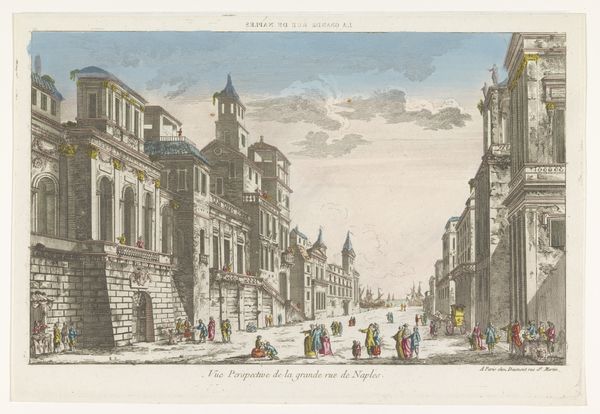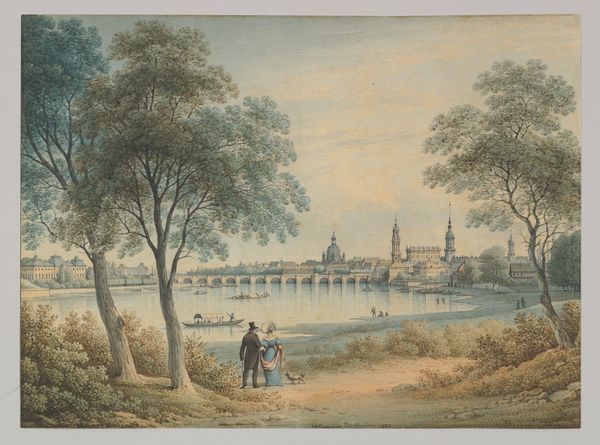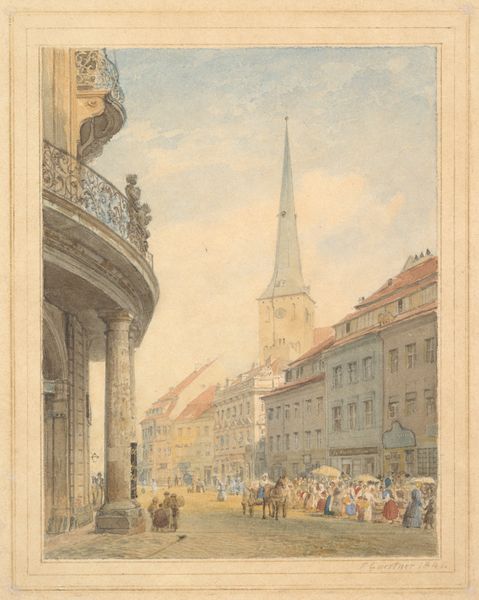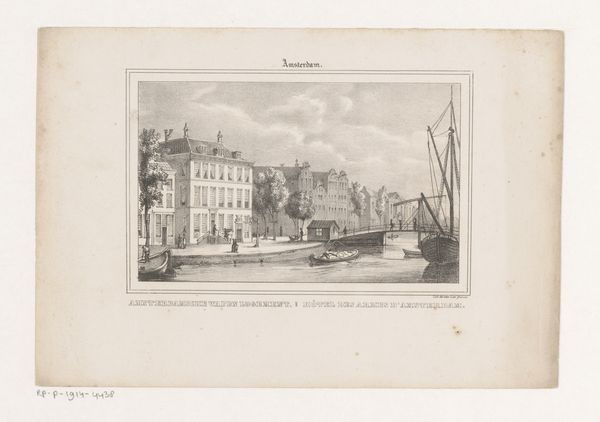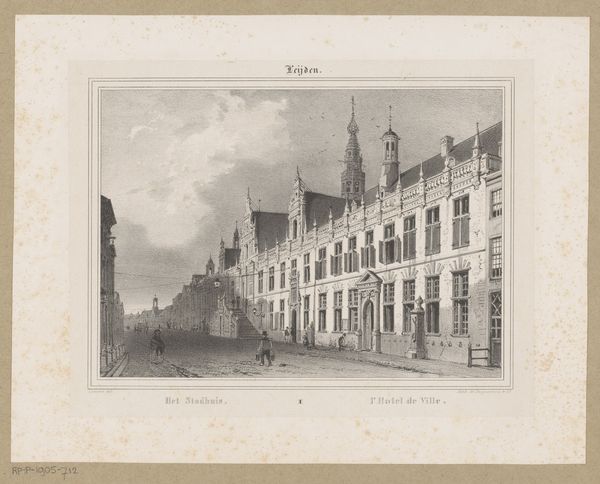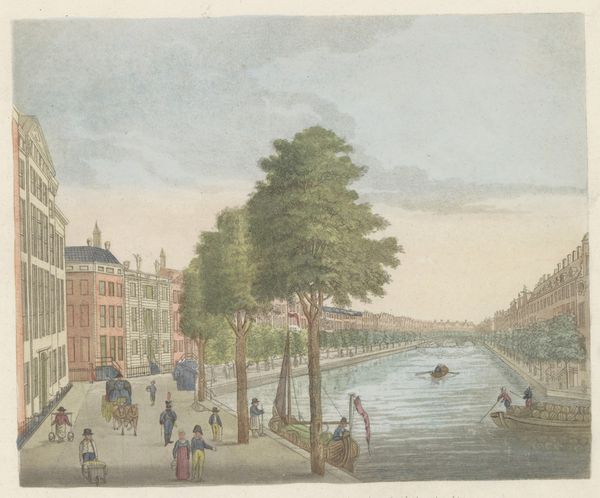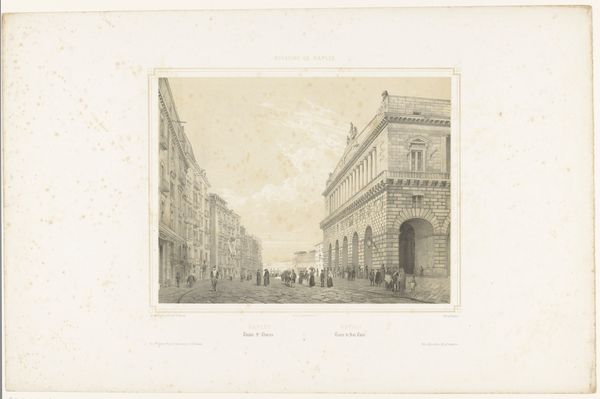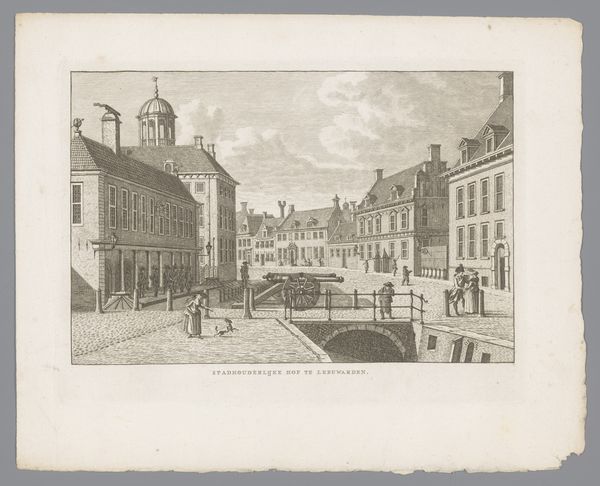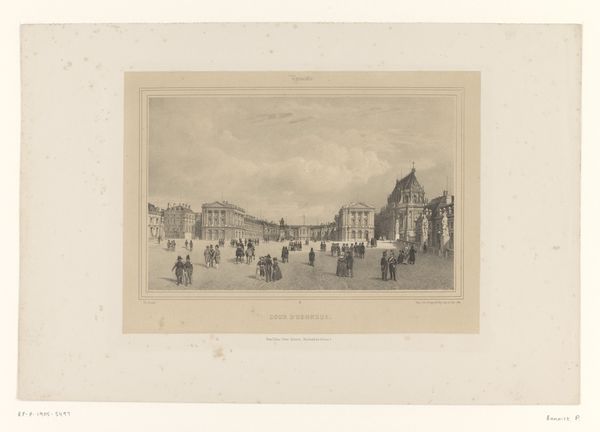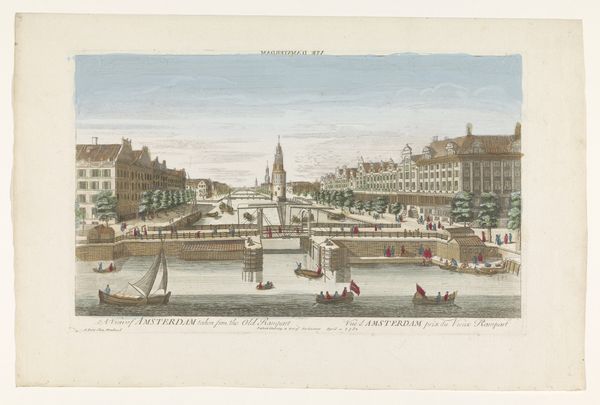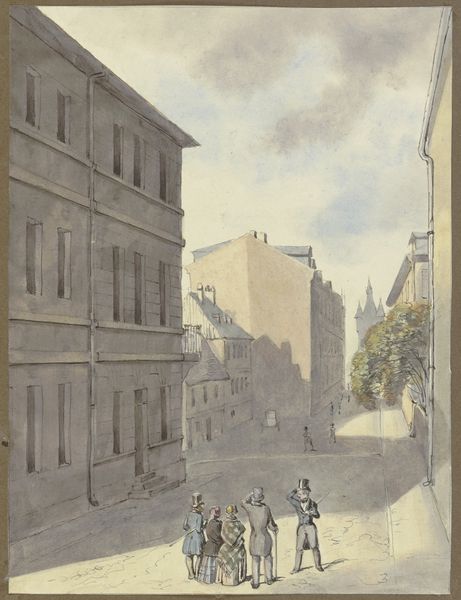
painting, watercolor
#
neoclacissism
#
painting
#
landscape
#
watercolor
#
cityscape
#
watercolor
Dimensions: height 222 mm, width 316 mm
Copyright: Rijks Museum: Open Domain
Editor: This watercolor piece, titled "Italian Cityscape," by Bartholomeus Johannes van Hove, dating sometime between 1800 and 1880, gives off a very serene and almost dreamlike feel. It’s a landscape with the softest, most muted colors. The buildings and sky almost seem to blend together. What strikes you most about this cityscape? Curator: The visual language of this watercolor immediately conveys a sense of ordered space and controlled perspective. Notice the linear progression guiding the eye deep into the composition, establishing a clear spatial hierarchy. The architectural forms, rendered with meticulous detail, speak to a fascination with structure and design. Can you see how the geometric solidity of the buildings interacts with the fluidity of the watercolor medium? Editor: Yes, now that you point it out, it's quite fascinating. The lines are crisp, but then the color kind of melts away around them. It seems intentional. Curator: Precisely. Van Hove orchestrates a visual dialogue between line and wash, structure and dissolution. The subdued palette further contributes to the overall effect of tranquility, directing attention toward the formal arrangements. The relationships and careful application of light and shadow contribute greatly to its aesthetic experience, further demonstrating an understanding of pictorial space. Have you considered how this controlled environment evokes a certain feeling, perhaps an embrace of Neoclassical ideals? Editor: It’s all much more considered than I first thought! The way everything’s composed feels very intentional, almost staged. I hadn’t considered its Neoclassical roots, but now I see that the emphasis on order makes a lot of sense. Curator: Indeed, studying the painting's aesthetic structure and historical themes exposes a deeper understanding of its composition, contributing to one’s aesthetic comprehension of art and the relationship to history. Editor: I'll definitely look at paintings in museums differently now, considering these points of composition, structure, and artistic choice.
Comments
No comments
Be the first to comment and join the conversation on the ultimate creative platform.
